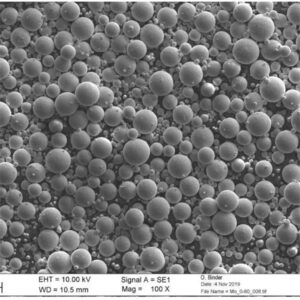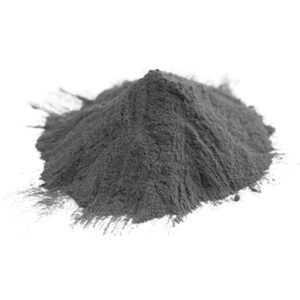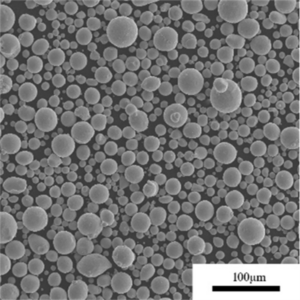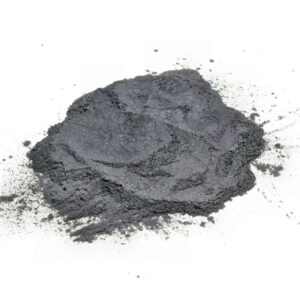ภาพรวมของ ผงการผลิตสารเติมแต่ง
Additive manufacturing powders refer to metal alloy materials produced in powder form specifically for 3D printing techniques like selective laser melting (SLM), direct metal laser sintering (DMLS), electron beam melting (EBM), and binder jetting. The optimized particle size distributions, morphology, chemistry, and powder properties facilitate precise, layer-by-layer fusion into end-use components.
Table 1: Overview of Additive Manufacturing Powder Attributes
| คุณลักษณะ | คำอธิบาย |
|---|---|
| Feedstock Material | Spherical metal alloy particles |
| วิธีการผลิต | Gas atomization, electrolysis, carbonyl |
| Materials Used | Titanium, aluminum, stainless steels, superalloys, tool steels |
| ขนาดอนุภาค | 10 – 45 microns typical |
| คุณสมบัติสำคัญ | Flowability, density, microstructure, purity |
| Primary Applications | Aerospace, medical, automotive, industrial |
Thanks to careful control over characteristics like particle shape, size distribution, chemistry, and microstructure, AM powders flow smoothly, pack densely, and fuse consistently layer after layer to create intricate, robust metallic components with mechanical properties matching or exceeding traditional fabrication routes.
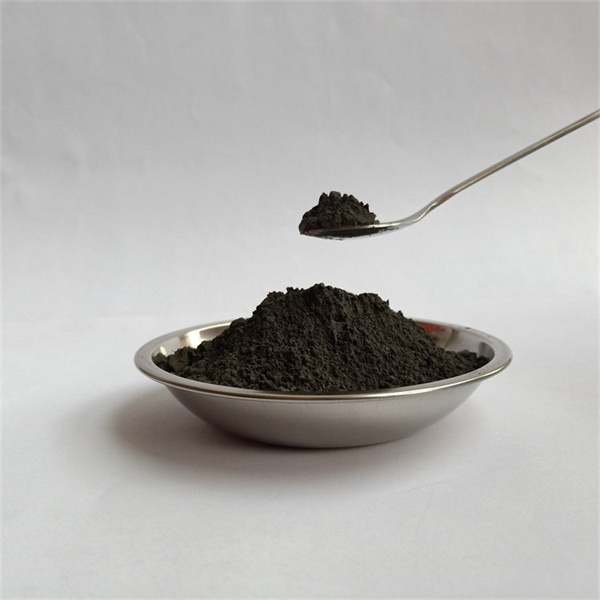
Metal Powder Production Methods for AM
Additive powders utilize several primary production routes to generate fine spherical powders with the desired chemistry, grain formation, surface morphology, porosity levels, and particle distribution specifications required by AM processes.
Table 2: Comparison of Additive Manufacturing Powder Production Methods
| วิธี | คำอธิบาย | Pros/Cons |
|---|---|---|
| การทำให้เป็นอะตอมก๊าซ | High pressure gas breaks up molten metal stream into droplets | Uniform particles, alloy flexibility downside is higher cost |
| การทำให้เป็นอะตอมพลาสมา | Electrode arc melts/disintegrates metals into particles | Very spherical powder, small batches |
| Hydride-dehydride | Alloy powder decrepitated via hydrogen absorption | Very fine powders with good flowability but lower density |
| อิเล็กโทรไลซิส | Metal feedstock dissolved from anode into powder | Lower cost but irregular flaky shapes |
As AM hardware capability advances permitting finer resolutions down to 20 microns, tighter powder particle size distributions centered between 15 to 45 microns become vital – calling greater gas and plasma atomization adoption facilitating spherical meteoritic powder ideal for dense packing and smooth raking.
Matching production route against intended AM process requirements ensures optimal powder specifications balancing performance trade offs.
Types of Metal additive manufacturing powders
Various metal alloys produced in powder form now see widespread adoption across AM techniques spanning inexpensive polymers through to expensive refractory superalloys thanks to enhanced design freedom facilitating part consolidation plus elevated property performance beyond casting or machining limits.
Table 3: Common Metal Powder Materials Leveraged for AM
| Material Class | Alloys Types | คำอธิบาย |
|---|---|---|
| อลูมิเนียมอัลลอยด์ | AlSi10Mg, AlSi7Mg | Lightweighting across aerospace, automotive |
| โลหะผสมไทเทเนียม | Ti-6Al-4V, Ti 6Al4V ELI | High strength aviation and biomedical implants |
| เหล็กกล้าไร้สนิม | 304L, 316L,17-4PH | Corrosion resistance for marine hardware |
| เหล็กกล้าเครื่องมือ | H13, Maraging 300 | Extreme hardness cutting tools and molds |
| นิกเกิลซูเปอร์ลลอย | Inconel 718, Inconel 625 | Turbo machinery like aerospace engines |
| Exotic alloys | Copper, cobalt chrome, tungsten | Custom compositions push limits |
The optimized powder bed fusion environment facilitates processing traditionally challenging materials compositions beyond conventional manufacturing hurdles. This enables innovations across electronic packaging thermal management needs, oil & gas valves and pumps for extreme environments, auto racing components, and satellite hardware.
Carefully selecting optimum alloy choices against design priorities around weight, cost, strength, and environmental compatibility facilitates ideal high performance additive parts unmatched by legacy processes.
Key Properties of additive manufacturing powders
To ensure smooth, effective material deposition critical for achieving dense defect-free printed components, additive manufacturing powder products must meet stringent requirements related to their flow characteristics, apparent densities, residual porosities, microstructures and contamination limits.
Table 4: Typical Metal AM Powder Properties
| ลักษณะ | ค่าทั่วไป | Test Methods | ความสำคัญ |
|---|---|---|---|
| สัณฐานวิทยาผง | Smooth near-spherical | SEM imaging | Powder bed packing and flow |
| การกระจายขนาดอนุภาค | 10μm – 45μm | การวิเคราะห์การเลี้ยวเบนเลเซอร์ | Layer resolutions, build speeds |
| ความหนาแน่นที่ชัดเจนและแตะ | 65-80% / 80-92% respectively | Gravimetric measurements via Hall flowmeter | Print resolution and quality |
| Flow rates | 23-33 sec for 50 g | Timed funnel tests | Powder spreading performance |
| Residual porosity | & lt; 1% | Gas pycnometry | ความหนาแน่นและคุณสมบัติเชิงกล |
| Ox/N contamination | <1000 ppm / <500 ppm | Inert gas analysis | Powder reuse, avoid inprocess cracking |
Verifying critical powder properties at production using advanced instrumentation facilitates repeatability overcoming batch-to-batch property deviations using real-time statistical process adjustments.
Matching well characterized powder having stable creation processes against tight machine tolerances ensures reliable AM production runs.
Specifications for Metal additive manufacturing powders
To ensure high quality components from AM hardware systems, metal alloy powders must conform to tighter chemistry controls and dimensional distributions relative to conventional powder metallurgy destined for compaction and sintering alone.
Table 5: Typical Additive Powder Specification Values
| พารามิเตอร์ | Common Range | วิธีทดสอบ | ความสำคัญ |
|---|---|---|---|
| การกระจายขนาดอนุภาค | 15μm – 45μm | การเลี้ยวเบนเลเซอร์ | Controls minimum feature resolution |
| Elemental impurities | & lt; 1,000 ppm | ICP spectroscopy | Powder reuse ratios |
| ความหนาแน่นที่ชัดเจน | 65-85% theoretical | Gravimetric analysis via Hall flowmeter | Influences mechanical performance |
| แตะความหนาแน่น | 80-95% theoretical | Gravimetric analysis | Layer packing ratios |
| อัตราการไหลของห้องโถง | <40 sec for 50 g powder | Timed funnel test | Powder bed spreading consistency |
| รูปร่างอนุภาค | >80% spherical | SEM imaging | Power bed fluidization evenness |
| Residual porosity | & lt; 1% | Gas pycnometry | ความหนาแน่นและคุณสมบัติเชิงกล |
Monitoring advanced Uniformity Coefficient and Flow Rate Ratio formulas developed for metal AM powder provides deeper insights over simple Hall flow alone ensuring reliable application performance.
And by specially tailoring size distributions, powder chemical supplies actively facilitate process improvements chasing finer resolutions, faster build speeds, and longer uninterrupted production runs crucial for AM adoption.
Grades and Standards for additive manufacturing powders
With additive manufacturing penetrating regulated environments spanning aerospace, medical, automotive, and industrial categories, standardized methods for specifying, testing, certifying and controlling metal powders become vital ensuring repeatability, quality, and safety.
Table 6: Emerging Standards for Metal AM Powders
| มาตรฐาน | ขอบเขต | วัตถุประสงค์ |
|---|---|---|
| ASTM F3049 | Standard guide for characterizing AM powders | Establish benchmark test methods assessing common powder attributes |
| ASTM F3056 | Specification for nickel alloy powders | Chemistry, manufacture, retest frequency |
| ASTM F3301 | Practice for secondary processes methods applied to AM parts | Specify acceptable post-processing techniques |
| AS9100 rev D | Aerospace sector approved suppliers | Quality systems for regulated industries |
| ISO/ASTM 52921 | Standard terminology for AM – coordinate with global norms | Ensure unified AM powder material terminology and specifications |
As AM penetrates further commercial and defense industries requiring strict verification and part traceability, standardized testing practices, chain of custody documentation, lot sampling rates, facilities environmental control, and personnel training become mandated. Compliance ensures users have full material pedigree and process transparency facilitating qualification rigor expected in critical applications.
Government agencies also support ongoing development around material specifications, test techniques and best practices as AM advances across various markets. Collaboration between powder manufacturers, printer OEMs, and industrial users will continue driving better benchmarking improving real-world performance and reliability.
Applications of Metal Additive Powders
Thanks to expanding printer system capability and availability of optimized powders for AM needs, additive manufacturing transforms production economics across numerous industries from aerospace through consumer goods.
Table 7: Primary Metal Additive Manufacturing Powder Applications
| ภาค | Manufacturing Process Example | Cost/Performance Advantages |
|---|---|---|
| Aerospace engines | Inconel 718 nozzles and manifolds via DMLM | Reduced lead times, buy-to-fly ratio improvements |
| Aviation turbines | Ti64 structural brackets via EBM | Weight savings, part consolidation |
| Biomedical implants | Cobalt chrome orthopedics by DMLS | Increased bone integration rates |
| Automotive racing | Custom alloys and geomtries via SLM | High heat/vibration resistance and weigh savings |
| Luxury watches | Gold and steel micro components by SLM | Design/styling freedom and rapid iterations |
Thanks to expanding materials options plus larger available build volumes, metal AM transforms production barriers facing conventional processes – facilitating higher strength lightweighting, enhanced heat resistance through generative cooling channels, part consolidation plus reduced total lead times.
These manufacturing advantages spur adoption of AM techniques displacing traditional production across cost sensitivity industries once economics of scale become realized. Continued materials innovation promises expanding applications into further extreme chemical, pressure, corrosive, and loads environments.
Suppliers of Metal AM Powders
A wide range of powder manufacturers now supply specialized metal materials catering additive manufacturing needs across starter equipment for smaller job shops through large tier 1 aerospace providers and custom alloy innovators pushing AM capability limits.
Table 8: Leading Metal Powder for Additive Suppliers
| บริษัท | Portfolio | คำอธิบาย |
|---|---|---|
| แพรพ์เซอร์ | Titanium, nickel, cobalt alloys | Leading producer of atomized gases and powders |
| Sandvik | เหล็กกล้าไร้สนิม | High performance alloys including duplex and maraging steels |
| เทคโนโลยี LPW | Aluminum, titanium, nickel alloys | Custom alloys and binder products |
| ช่างไม้ | Tool steels, stainless steels | Custom alloys leveraging steelmaking expertise |
| ap & amp; c | Titanium, nickel superalloys | Powder life cycle solutions provider |
| Hoganas | เหล็กกล้าไร้สนิม | High performance alloys including duplex and maraging steels |
These powder leaders actively collaborate within the AM industry alongside printer OEMs, researchers, and standardization groups to continually improve dimensional repeatability, reduce porosity rates, and enhance finished component aesthetics and mechanical specifications.
Cost Analysis for Metal AM Powders
Prices for common metal AM powders range dramatically based on composition, production route, distribution tier, testing requirements plus purchase volumes – but generally command substantial premiums over conventional powders for pressing and sintering applications alone.
Table 9: Metal Additive Powder Pricing
| วัสดุ | ช่วงราคา | Cost Drivers |
|---|---|---|
| อลูมิเนียมอัลลอยด์ | $ 50-120 สำหรับกิโลกรัม | Lower input metal costs but high gas atomizer expense |
| สแตนเลส | $50-200 per kg | 316L more expensive than 17-4 or 15-5 grades |
| เหล็กกล้าเครื่องมือ | $60-220 per kg | Higher alloying element costs |
| โลหะผสมไทเทเนียม | $200-600 per kg | Processing intensive extraction and handling |
| นิกเกิลซูเปอร์ลลอย | $200-1000 per kg | Low element yields and ability to print crack-free critical |
| Exotics like Ta or W | $500-2000 per kg | Very low global output availability currently |
Pricing premiums over conventional powders result from much lower batch sizes, higher material input costs, and processing differences optimizing characteristics like sphericity and controlled chemistry facilitating AM needs.
As printer adoption expands, greater competition and manufacturing scales will likely gradually reduce costs over 5-10 years – following the typical technology maturity roadmap. But specialty grades will remain priced significantly higher reflecting underlying metal input market dynamics.
คำถามที่พบบ่อย
Q: How are used/recycled metal AM powders rejuvenated for additional printing cycles?
A: Powders are sieved to remove large particles exceeding 100 microns, chemically rebalanced restoring oxygen/nitrogen levels, and blended with proportional virgin materials ensuring suitable reuse without degrading end printed part quality.
Q: What critical specifications differ the most between AM and conventional pressing powders?
A: Narrower particle size distributions averaging 25 microns, higher apparent and tap densities, smoother spherical meteoritic powder shapes, and lower oxygen plus nitrogen levels differentiate AM needs over traditional powder metallurgy only requiring looser tolerances. Achieving these optimized characteristics facilitates defect free AM printing.
Q: How many times can common AM powder alloys get reused typically?
A: Similar titanium and nickel superalloys approach 20 cycles before requiring replenishment with fresh powder. Less expensive stainless steels may reach 50+ reuse cycles. Aluminum and highly reactive grades see most limited recycling durations under 5 cycles.
Q: What property enhancement potential exists with metal AM powders over incumbent materials?
A: Combining elevated strength-to-weight ratios by thinning/hollowing sections with embedded channels facilitating fluid flow, heat transfer, or structural reinforcement unlocks generative design configurations revolutionizing manufactured components impossible using subtractive machining or single step casting processes alone.
Q: Which industry categories show the greatest promise currently for metal AM powder growth?
A: Aerospace, medical devices, automotive, and oil/gas sectors lead early mainstream expansion thanks to high value components justifying R&D investments. But longer term expectations forecast eventual mass adoption improving consumer goods durability leveraging AM flexibility advantages as system costs decline.

